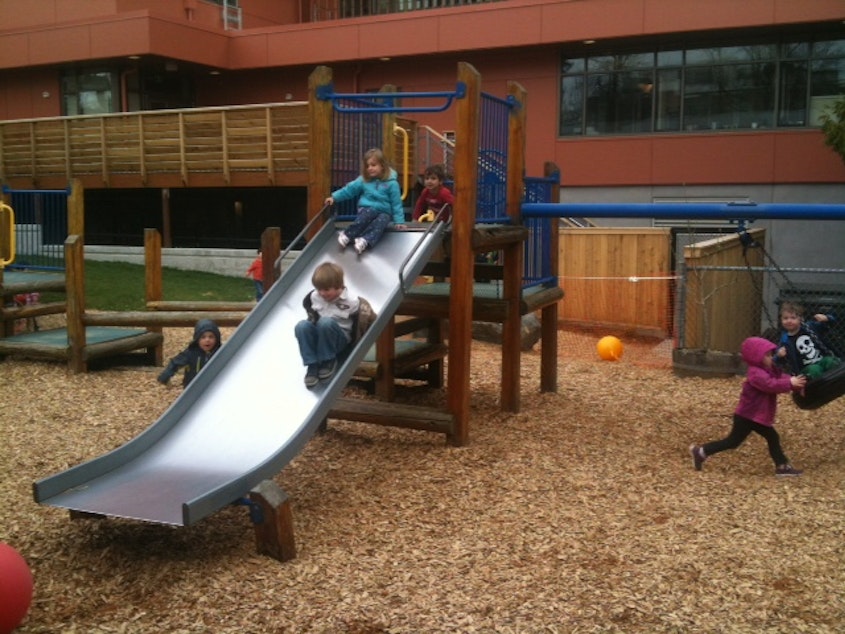Seattle Schools Stay Open To Prevent 'Summer Slide'

The 7- and 8-year-olds in this math class at Hawthorne Elementary School in Seattle's Columbia City neighborhood seem oblivious to the sunshine beating down on the playground outside. They're busy lining up red, green, blue and yellow tiles in neat staircases.
Summer Staircase is also the name of this summer program for elementary students in Seattle Public Schools. It's a six-week effort to stave off "summer slide," what educators call the learning loss that many students experience in the three months between school years.
For 7-year-old Torre Searcy, a perfect summer afternoon is shooting hoops and seeing how many pull-ups and push-ups he can do. "I don't really read at my house, because I have so much fun things to do. It's, like, summer!" Torre said.
Torre takes three hours of reading and math classes at Hawthorne. It's the same school he attends during the school year.
He said he doesn’t mind being back in school just a few weeks after it let out for summer. "Well, there's stuff that are fun," Torre said. "It's just you're learning and getting your brain fixed and stuff like that. Trying to get smarter and smarter every day."
That’s what Danielle Baer likes to hear. Baer is the communications and resource development director for School’s Out Washington, an organization that focuses on learning opportunities beyond the school day. School's Out Washington works with Seattle and other districts on their summer learning strategies.
Baer said if kids don’t have access to educational opportunities in the summer, the effects on their learning can be dramatic after a few years.
"For example, in fifth grade, research is saying, low-income students can fall two-and-a-half to three years behind their middle-to-high-income peers," she said.
By ninth grade, summer learning loss accounts for up to two-thirds of the achievement gap between low- and higher-income students, by one estimate.
John Hughes, who oversees summer learning for the district, said the district introduced Summer Staircase to address the disparities. What began last summer at five schools has expanded to 11 schools this year, and more than 1,500 students entering grades one through five.
The goal is to help the youngest students who are struggling with math and reading – and then to keep them coming back year after year.
"If we capture some of these kids this year in their kindergarten summer, and we keep them over the next five summers, that will be an additional year of education these kids will receive in literacy and math," Hughes said.
Hughes said it's important to make summer school fun for kids, while keeping it intensive. Classes are small, and the student-teacher ratio is seven-to-one. That helps teachers give students extra help in areas where they're struggling.
Hughes said he’s seen students make half a year of progress in six weeks.
"By really focusing on our K-4 students, I think that we're going to see some real progress over the next couple years. And I really feel it's going to be a positive shift for Seattle as a whole," Hughes said.
Hughes said he’d like the program to serve more students in future summers. There's a long wait list. He'd also like the half-day program to become full-day, with arts and outdoor activities.
Back in math class, 7-year-old Torre says he has lots of goals this summer.
One is to learn how to tell time.
"You got to do lots of things in the summer," Torre said. "Summer's like a free day, but you still have to learn stuff and be smart."

